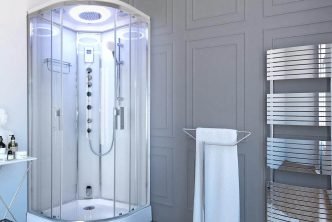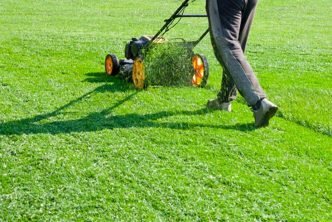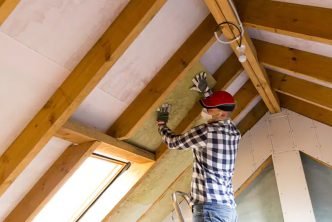Do you ever notice how dry the air in your home feels? Are moisture levels plummeting and causing your nose to be dry and irritated?
If you’ve ever asked yourself, “why is the humidity so low in my house?” Here’s some good news: you’re not alone! Many homeowners across the country are dealing with unusually low humidity levels in their households. But what exactly is causing this drop in indoor air moisture?
In this blog post, we’ll explore some of the potential causes – covering everything from HVAC systems to open windows – so you can identify possible solutions for a more comfortable home. Keep reading for essential tips on improving indoor humidity levels!
Want to find out more about humidifiers? Click here.
Table of Contents
Common causes of low humidity in your home
If you find yourself asking, “why is the humidity so low in my house,” there are a few potential reasons why. Some of these include:
Season
Wintertime is often known for its chilly weather, but there’s another element to it that can cause discomfort and health risks – low humidity. Cold temperatures typically cause air to become more dry as molecules in the air slow down, reducing their ability to retain moisture.
Because of this, the winter season tends to drop the levels of relative humidity, making your home feel particularly uncomfortable and potentially bad for your health. Low humidity in winter can cause various respiratory issues such as nosebleeds, dryness in the throat and mouth, or even nose pain or irritation.
If the levels get too low, your furniture or artwork may start cracking due to lack of proper lubrication on its wooden components. Thankfully there are numerous ways which you can add humidity back into your home environment where you can significantly improve both your comfort level and your health!
Geographical location
In addition to the seasons, where you live can have a significant effect on the humidity levels. Low humidity is often a characteristic of certain geographical locations, particularly those with high altitude, and arid climates like desert areas.
This can be noticed by the reduction in moisture in the air, leading to drier skin or static electricity. If you live in a mountainous or desert region, you are more likely to experience low humidity.
Type of HVAC system
Low humidity levels in your home can be directly impacted by the type of HVAC system you have installed. Ducted, split and multi split systems are efficient for cooling, but if the outside air is low in humidity already then these types of systems can reduce it further because they recirculate the same air within a space. You could also consider picking a heat pump or mini-split for a more efficient solution, as these are all-in-one heating and cooling systems.
Some HVAC systems have built-in humidifiers or run with configurations that make them better suited to dry climates. If you live in an arid region, you’ll want a device that offers direct control over the humidity settings and more advanced humidification capabilities for optimum comfort.
Indoor activities like cooking, showering and leaving the door opened
Did you know that indoor activities can also affect the humidity levels of your home? Some experts suggest, if possible, use the stovetop more than the oven to bring more steam into your living space.
Additionally, colder and shorter showers will reduce the humidity in the air of your home. While longer and hotter showers can increase your utility bill, the extra steam may increase humidity levels in your home as well. It is important to note that warm showers are better than hot showers as hotter water tends to dry out the skin.
Don’t leave the doors or windows open as this can cause warm air to escape your home and result in drier conditions.
Symptoms of low humidity levels and how to combat them
If you find yourself with dry skin, frequent nosebleeds, or lots of static it may have led you to wonder, “why is the humidity in my house so low?” There are several symptoms of low humidity. Let’s take a look and see how you can combat them.
- Dry skin and chapped lips
- Nosebleeds
- Static electricity
- Sinus congestion and a sore throat (especially for smokers and those with asthma or allergies)
When the air is dry, it can cause your skin, lips and internal respiratory organs to become irritated. Combat this with moisturizing cream and lip balm. Applying a thin layer of vaseline inside your nostrils will help maintain moisture and prevent nosebleeds. Drink lots of water to stay hydrated.
To address the low humidity issue, invest in a humidifier to increase the moisture levels in your air.
Increase humidity in your home using appliances or plants
The air in our homes often becomes dry due to winter heating and air conditioning, which can cause adverse health effects such as dryness in the nose, throat, and skin. To prevent these issues, it’s important to add moisture back into your home’s air.
The best way to do this is by using a humidifier or adding plants. Humidifiers create extra moisture by releasing water vapor into the room while plants can filter the air of dust particles as well as improve humidity levels due to their natural transpiration processes.
If you choose to use a humidifier, be sure to change out the water every couple of days so that bacteria buildup doesn’t occur. Whichever route you decide to go – get ready for a healthier home atmosphere!
Conclusion – Why is the humidity so low in my house?
If you find yourself asking “why is the humidity in my house so low”, we hope this article was helpful in addressing not only the cause of the issue, but some ways to recognize and combat it as well.
If you’re interested in investing in a humidifier, contact an HVAC professional to help you assess which system will be the best for your needs.





